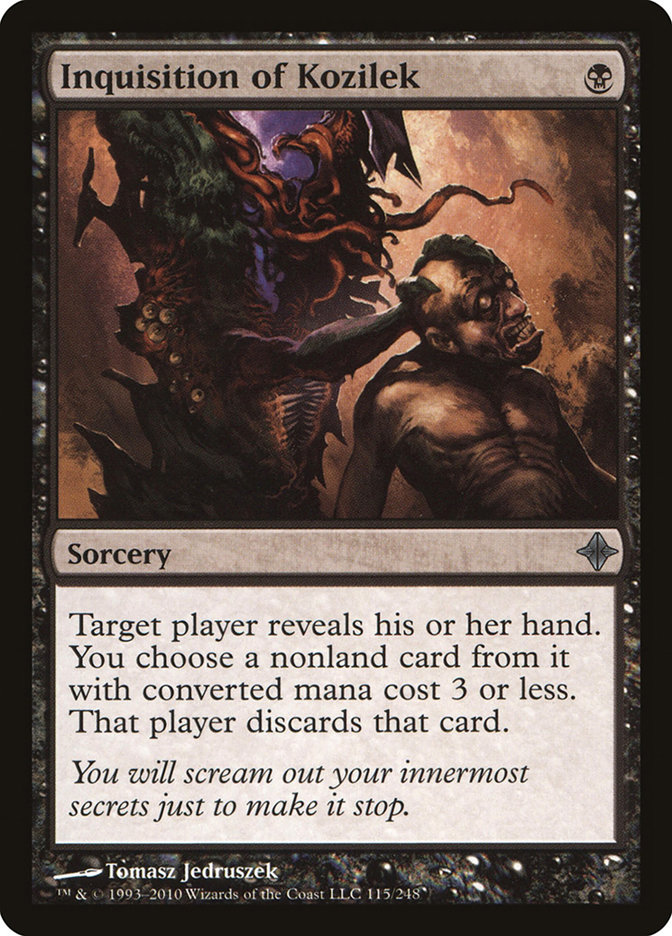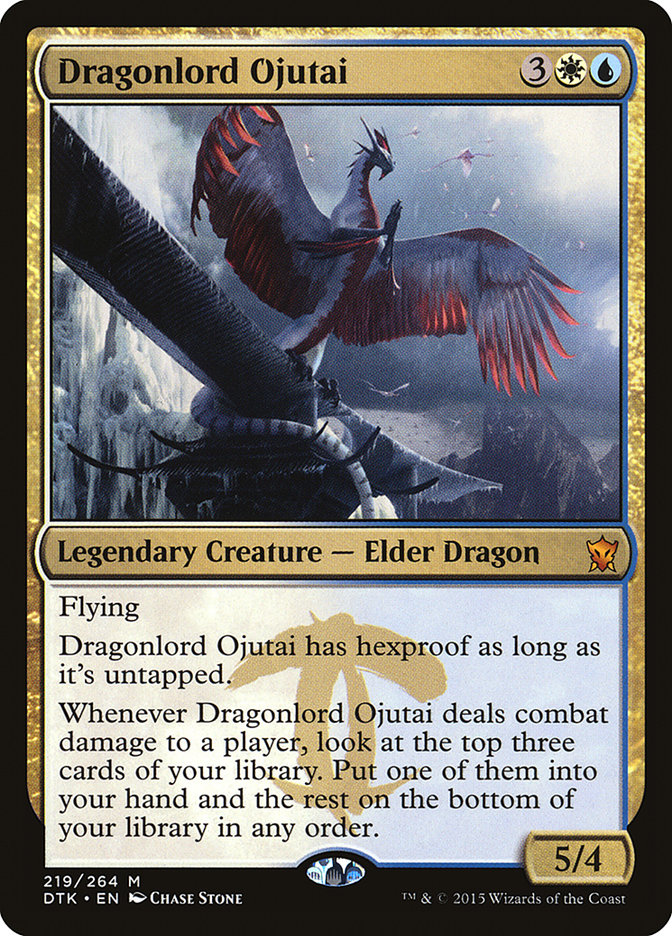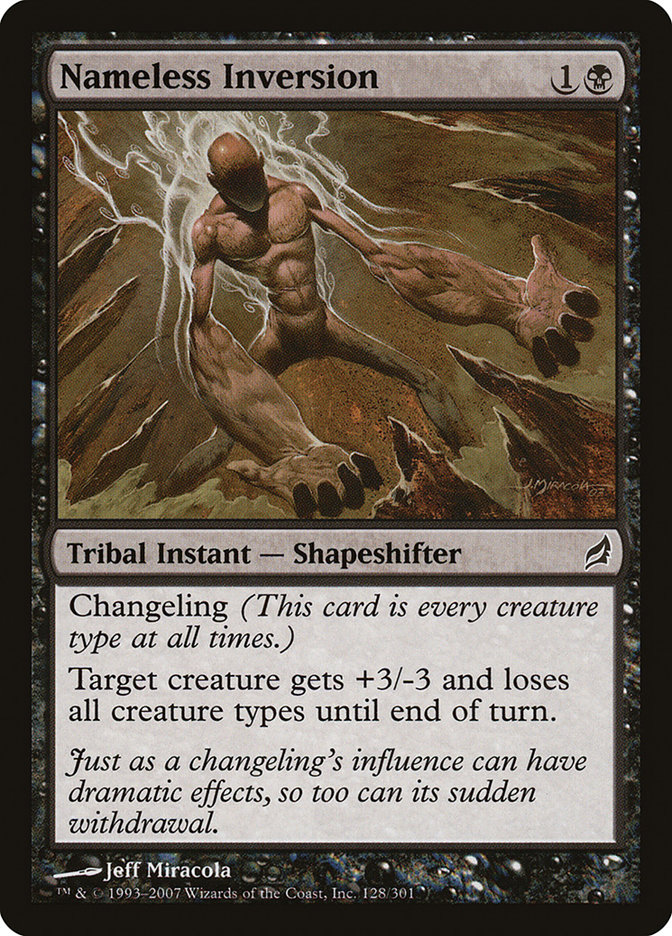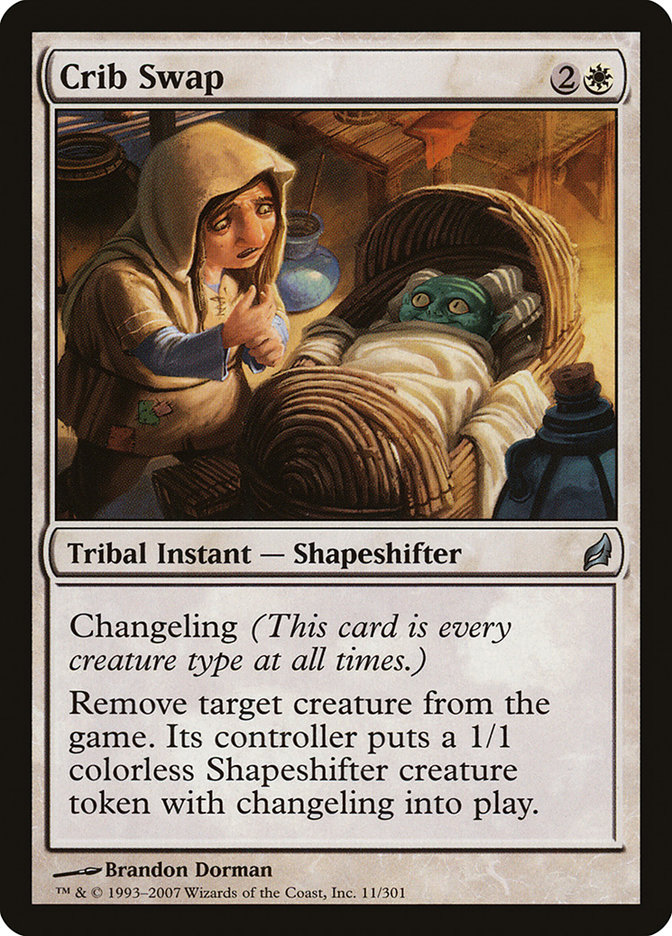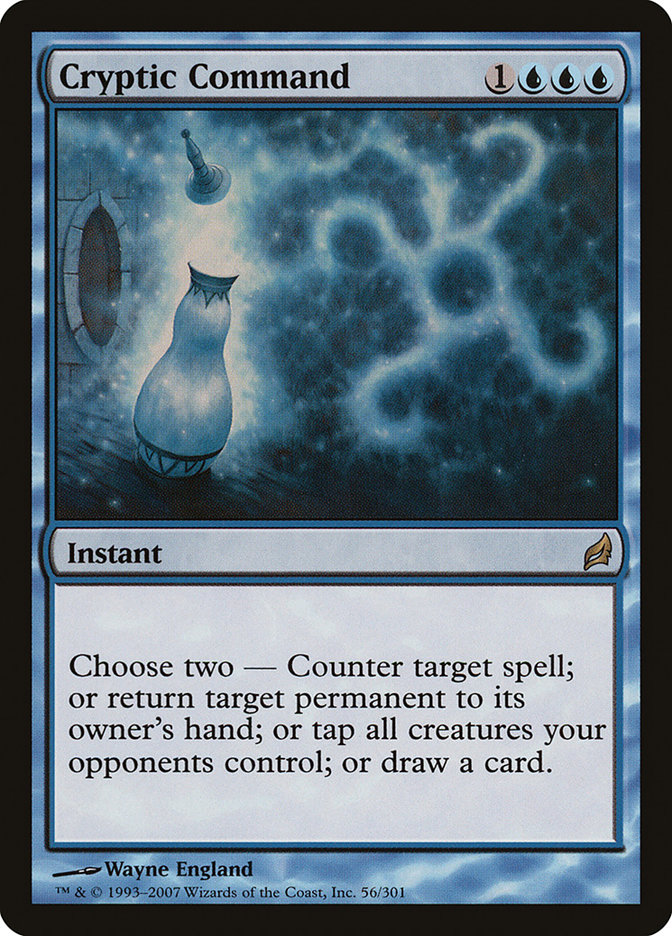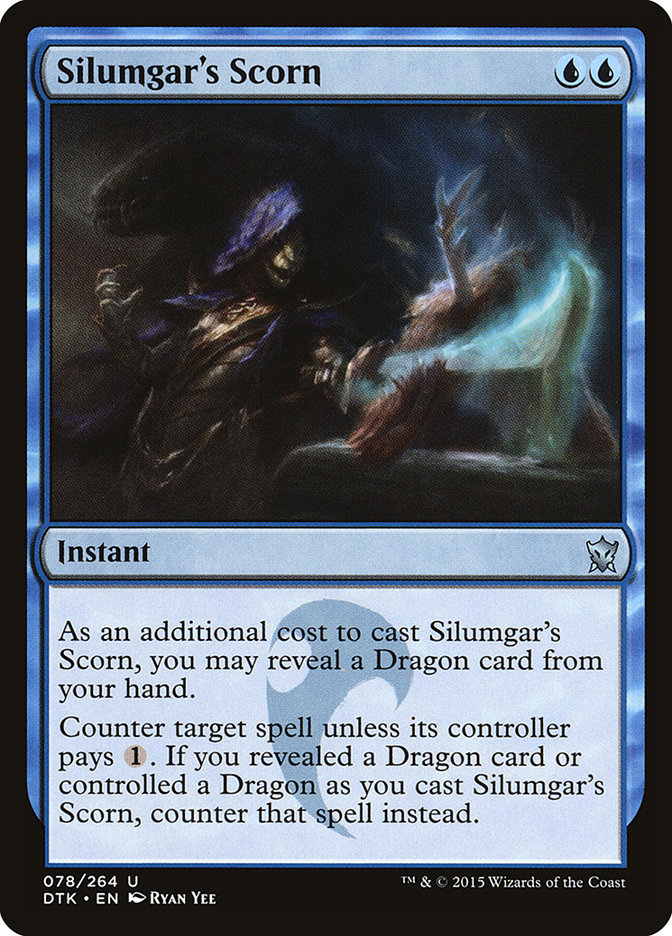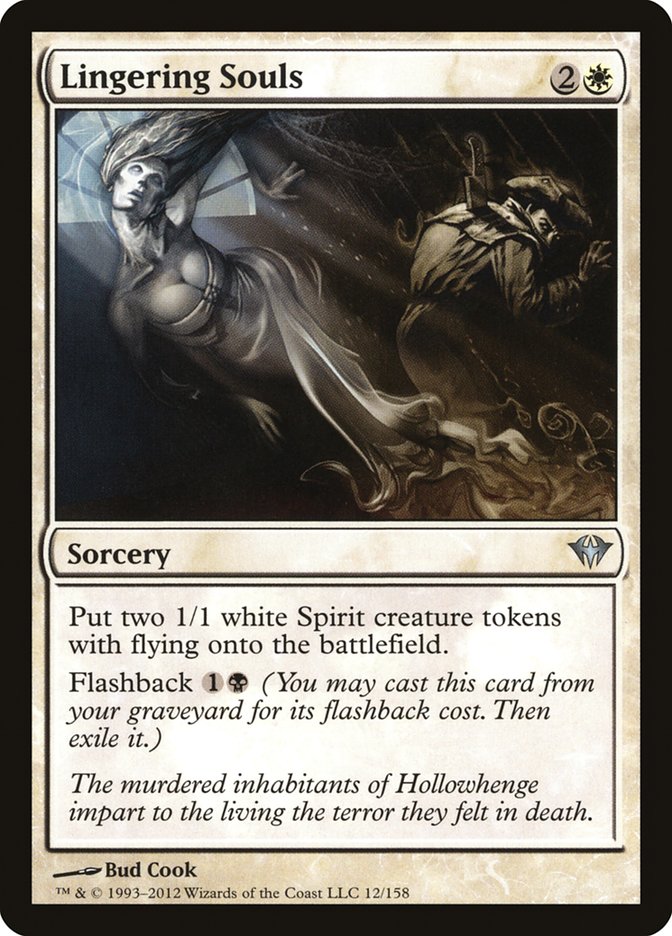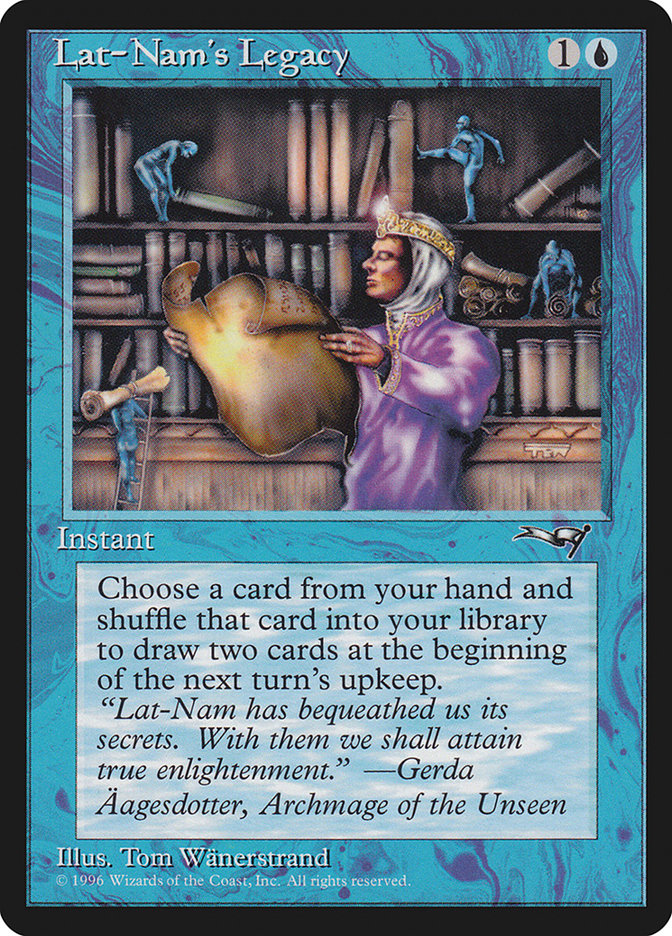At one point during the Grand Prix in Charlotte, someone came up to me and asked if control was even possible in Modern. He’d been trying to play it, and while he’d made the second day of the Grand Prix, he wasn’t doing very well.
It is, I said. It’s just important how you put it together.
A good Modern deck, in my opinion, tends to be doing something very powerful in a vacuum. Regardless of what the opponent is doing, a good Modern deck, even a reactive one, is playing cards that demand a response or they end the game quickly. This is, in part, why I’m not very excited about a lot of Jund lists I’m seeing right now; no disrespect to any of them, but they often just let the game drag on.
Take the top-finishing Jund list from Grand Prix Charlotte:
Creatures (14)
- 1 Grim Lavamancer
- 4 Dark Confidant
- 4 Tarmogoyf
- 3 Scavenging Ooze
- 1 Huntmaster of the Fells
- 1 Tasigur, the Golden Fang
Planeswalkers (4)
Lands (24)
Spells (18)

I actually really like the look of this list, overall. Dark Confidant combined with copious discard can often do a real number on an opponent. But what I don’t like is that, aside from Tarmogoyf and a single Tasigur, this deck doesn’t have a draw where it hits very hard. As midrange aficionado Brian Kowal said over the weekend, the problem with a lot of midrange decks is that they disrupt the opponent but then they don’t close it out.
Yes, Jund has the powerful draw that looks like this:
But you can still just lose while you’re disrupting your opponent. Modern is about decks that can do that. You need to be able to make certain that games end.
This is one of the reasons that I’m so impressed by the Naya Company deck that my Team UltraPRO teammate Paul Rietzl made:
Creatures (27)
- 1 Birds of Paradise
- 4 Tarmogoyf
- 4 Wild Nacatl
- 4 Noble Hierarch
- 4 Knight of the Reliquary
- 3 Qasali Pridemage
- 3 Scavenging Ooze
- 4 Loxodon Smiter
Lands (22)
Spells (11)

Perhaps it will be a Wild Nacatl on turn one or a Loxodon Smiter on turn two, but whatever it is, the games can end fast. In addition, when you’re putting on this kind of pressure and then you add something to the mix like Collected Company, it really is quite devastating – especially after sideboarding when the cards you can be Calling up are creatures like Magus of the Moon or Kataki, War’s Wage.
This is part of the reason that Burn, for example, is such a potent deck in Modern. If you’re under immediate life-total pressure that might end your game as early on turn three, some of the ways you’re intending on playing your match have to be wildly changed. Take, for example, the simple act of searching up a Ravnica dual land: perhaps that spell you were planning on casting on turn two simply can’t happen, or perhaps it can but only at the cost of your turn-three spell. You can’t afford the extra two life unless that three-drop is winning you the game, though.
For a true control deck, the rules about power and closing out the game are just as valid. I don’t think you can actually play a controlling deck in Modern unless you have a set of plays that let you run away with the game. A quick glance of the Top 32 of Charlotte confirms that there are no true control decks that hit the top portion of the field that didn’t succeed by this measure. A hybrid control deck like Faeries, for example, can start in with grotesque semi-Time Walks with Mistbind Clique. The bizarre Lantern of Insight deck that finished 15th is actually more of a classic lock-style Prison deck than a classic control deck.
The top-finishing control deck was by my newly-minted Team UltraPRO teammate, Patrick Chapin, and he’s already written about his take on Grixis Control.
Creatures (9)
Lands (21)
Spells (30)
- 4 Lightning Bolt
- 2 Mana Leak
- 4 Serum Visions
- 4 Terminate
- 1 Remand
- 1 Shadow of Doubt
- 1 Electrolyze
- 2 Spell Snare
- 4 Cryptic Command
- 1 Dispel
- 4 Thought Scour
- 2 Kolaghan's Command
Sideboard

Tied for Top Eight, this deck is without a doubt an awesome deck choice for a control player in Modern. One of the reasons that the deck works, though, is this:
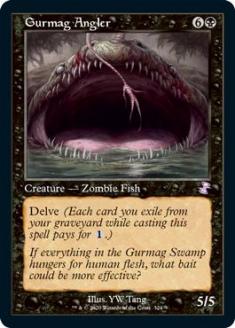


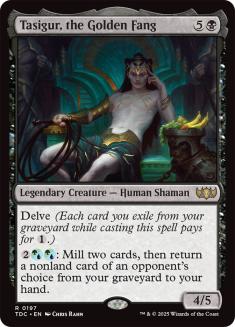

When it is ready to – which can be as early as turn two – this deck can simply close the game out. In addition, in a standstill, Tasigur can lock the game out simply by expending the mana it needs to and establishing yet more of an icy grip on the game.
I love Patrick’s deck. Hell, I’ve been playing a lot of the deck since the Grand Prix.
But, one thing I love about the deck that I played at the Grand Prix is that it is even better at locking out the game than Patrick’s.
And, besides, who doesn’t get a little tickled at the thought of playing this in Modern:
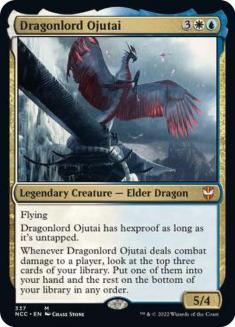



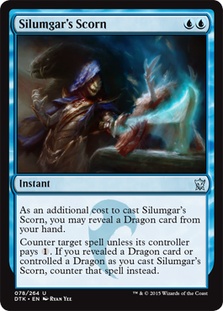



With that, here’s the list:
Creatures (8)
Lands (25)
Spells (27)

In the next-to-last build of this list, I had a Blind Obedience in the deck as well, but it ended up on the chopping block; until they allow more than fifteen card sideboards, something had to give…
I’m sure you have some questions, so let’s get to those:
Q: Why ‘Esper Dragons’ in Modern? I thought you don’t even like it in Standard?
Okay, it’s true that I don’t like Esper Dragons in Standard. However, comparing a deck archetype, even a shell of a deck archetype, in one format to another is like comparing apples and oranges. For example, if you look at a creature in Vintage, it is a very different beast than the same one in Legacy; simply put, a creature that hits the table in Vintage is far more likely to stick around because handling a creature is not a priority in Vintage.
In Standard, I personally simply can’t imagine playing Esper Dragons. Classic U/B Control is a deck that I’ve been playing since before Pro Tour Khans of Tarkir, and to put it bluntly, I think that when the deck is played properly there is literally no reason to play Esper Dragons over it.
Of course, U/B Control is not a forgiving deck, so if you make a mistake, it is likely to come back to haunt you. Esper Dragons, on the other hand, can often reward you with gifts off the top of the deck that can let you take back a game or a match that you were otherwise going to lose. That being said, there isn’t a single matchup where Esper Dragons is better than U/B Control by more than the narrowest of margins, and the vast majority of matchups are wildly better for U/B Control than Esper Dragons.
Now, in Modern we’re talking about essentially a different world. The tools that are at your disposal are incredibly different. The power of a semi-hard counter like Silumgar’s Scorn is actually quite remarkable. So long as you have enough Dragons to feed what Scorn needs, that card alone is a powerhouse.
And then there is Dragonlord Ojutai (or as I affectionately call him in our team forums, ‘OJ’).
The moment you attack with this card in Modern, the game often ends. No, not every time. But usually.
In testing and in tournaments in Standard, I’ve beaten a Dragonlord Ojutai. In Modern, it can happen too, but it is much, much harder. The weapons you pick up when a Dragonlord Ojutai connects in Modern are just that much more potent.
By way of example, these cards aren’t available in Standard, but OJ can certainly snap them up in Modern:
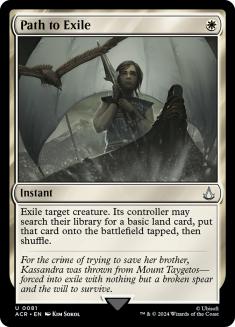
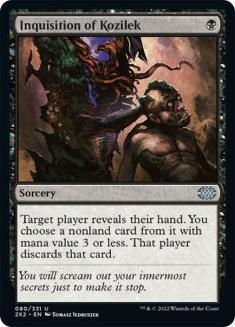
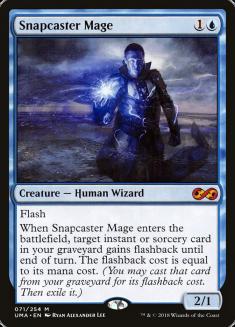
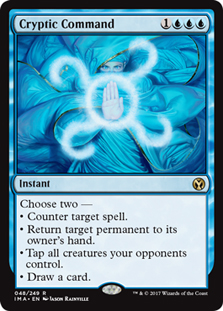
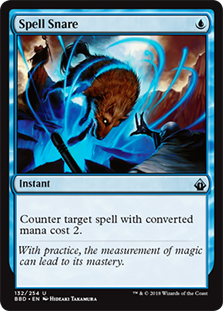
Even otherwise “unwinnable” games can end up torn away because of the strange power of these Modern cards. I’ve had games against Elves where they get out everything they need to combo off, but I literally Cryptic Command into Cryptic Command into Snapcaster Mage + Cryptic Command until they’re dead.
Q: Are there even enough Dragons in your deck for Silumgar’s Scorn to work?
In a way, yes. Changeling, as a card type, comes to save the day.
With a few copies of these, you can up your Dragon count so that Silumgar’s Scorn can be effective.
However, it is worth noting that this isn’t necessarily foolproof. An opposing Tarmogoyf can be much more dangerous when you’re running Nameless Inversion. In addition, the slot in your hand that is taken up by these cards is somewhat locked down, and an untimely discard spell can turn your Scorns into something truly awkward. That being said, the power of the card makes up for those times when it isn’t essentially just Counterspell.
Q: So, you have a Tolaria West? Is that even good? Why don’t you have a Deprive?
In a deck with 25 lands, Tolaria West is great as a semi-land. Turning Tolaria West into one of the many targets in the deck feels quite good. In the maindeck, you only have two spells that you can fetch out, Slaughter Pact and Engineered Explosives, but they both are a very potent answer to a set of problems that many decks can present.
After sideboarding, you also get access to Pact of Negation. This card is one that I almost want in the maindeck, but it really isn’t great unless you are planning on needing to stop something horribly powerful. A lot of the time Dragonlord Ojutai acts effectively like a seven-drop spell, which is a ton in Modern; it is a faux-seven because you have to actually have mana up to counter something lest you simply lose on the spot. Having a Pact of Negation in your hand lets you act much more wildly aggressively, because while many decks can threaten to potentially devastate you if you let your guard down, that doesn’t mean that they necessarily have the ability to punish you right then and there. If they do, it just means you tap out on the next turn to pay for the Pact, and potentially, OJ can find you the next step in stopping them.
If they don’t, though, the game ends. Bam.
In addition to the spells, tutoring for lands is not to be underestimated. Here are your usual targets:
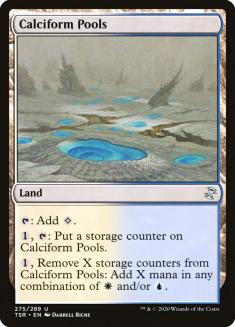
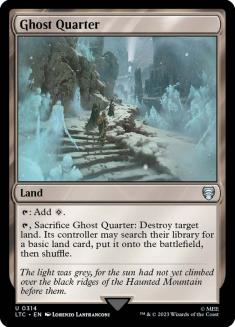
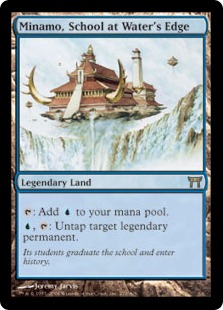
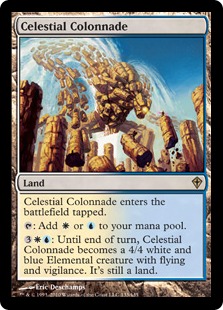
Each of these lands is incredibly powerful in their own right (but more on that later).
Because of the semi-combo with Tolaria West, a lot of people have brought up Deprive, and I have to say, I don’t think it is correct.
First of all, I love Deprive. A lot. I’ve played Deprive in a ton of decks, and I think that the card is a great example of power balanced by diminishing returns. The extra cost on Deprive is not something to scoff at. I’m sure it’s possible, for example, that a deck with three or four Deprive might exist, be competitive, and correct, but I totally doubt it.
In this deck, Deprive’s cost is simply too huge; I want to not only be getting to five mana to cast Dragonlord Ojutai, but I also want to be getting to six mana for Dragonlord Ojutai plus one mana (Path to Exile, Spell Snare, Inquisition of Kozilek) or for Snapcast Mage plus Cryptic Command.
Q: Are these lands correct? Where is your Godless Shrine? And Calciform Pools? Really?
It’s possible that the lands are not completely correct. I could see, for example, adding a Ghost Quarter or Minamo, School at Water’s Edge. But, I mostly think the lands feel spot-on.
The most glaring omission is probably the Godless Shrine. This actually came about because of a comment from Brian Kowal, talking about the manabase of his Abzan deck. He made a point that a lot of times we make our mana “too good” in Modern because we can. In my own deck, Godless Shrine is actually a card that I would want to search up more than a handful of times. However, by playing it, I actually add to the number of times that I don’t have access to UUUUU; this may sound crazy, but you will find that casting these two cards at the same time…
… has a prohibitive effect on your mana. Nearly every time that I’ve wanted to grab a Godless Shrine but wasn’t able to because I cut it, the mana worked out just fine because the rest of the mana is good. However, when I had included the Godless Shrine, the number of times it cost me the ability to cast a spell wasn’t just significant – those incidents were game-losing ones.
Calciform Pools has the distinction of being the most-read land I played. In a deck that is often waiting, Calciform Pools is an incredible card. On turn two the card is clearly subpar, but the moment you activate it, you’re up and running. Gaining the ability to cast several spells in the same turn can be a huge deal, and Calciform Pools is ideal for those games where you’re expecting it to go long. This card is potentially cuttable, but it does diminish the overall power level of the deck if you get rid of it.
Minamo, School at Water’s Edge is so good in the deck that GerryT told me I should play a second copy. Maybe I will. Being able to untap Dragonlord Ojutai in response to removal, or if you’re feeling bold, just to aggressively give it vigilance – now you’re playing with power. Dragonlord Ojutai is a very hard card to kill in the first place. Being able to untap it at will makes it almost nightmarish.
Q: So, how did you do in the Grand Prix? Is this a deck worth playing?
I had three losses.
The first loss was a frustrating one, losing to a great matchup, Grixis Twin. This was an unusual build of the deck, because it also included the Thought Scour package, and in our matchup, my opponent was able to drop a second-turn Tasigur in both games. It stuck, so I lost.
My next loss was against what I might call the most hopeless matchup I can conceive of: Dredgevine. He had all of the nightmares I could imagine: Bloodghast, Vengevine, Gravecrawler – you name it. It is certainly a matchup that I can win, but not a matchup that I am in any way likely to win. Dedicating a few slots to it would completely turn this matchup around, but doing so seems like a poor choice in the current metagame.
Finally, my last loss was against Grixis Twin, again, where my opponent played the game quite excellently, but I made a very bad mistake that let a game that should have been a win turn into a loss. Alas.
If you’re in love with either control or with OJ, I definitely think the deck is worth playing. It is powerful in its own right and it can lock down games quite easily. This doesn’t mean it is the ‘end-all, be-all’ in Modern, but except for those who think that Amulet Bloom is the ‘end-all, be-all’, I think the consensus is that there is no ‘end-all, be-all.’
Q: So you lost to Grixis Twin twice? How can you call this a good matchup?
Simply put, it is very hard to successfully combo off against this deck with Twin. Between a large number of efficient counterspells, Inquisition of Kozilek to clear the hand, and Path to Exile plus Slaughter Pact, trying to be a creature-based combo deck against this deck is very hard.
On the other hand, the alternative – fighting a protracted control war – isn’t a walk in the park either. It’s a better choice, to be certain, but it’s still rough.
In general, the games go to a long stall, and then a Dragonlord Ojutai actually manages to hit the table. Once that happens, generally speaking the game is over.
I used to have a Blind Obedience in the sideboard, and if you think that the metagame around you is such that you actually have room for it, I still highly recommend the card. It is obviously great against Twin, but it is also a reasonable choice against Burn (and any aggressive deck that has haste) and against G/R Tron.
Q: Are there any horrible matchups?
Well, I don’t like playing against this card one bit:
It’s lucky (for this deck, at least) that Liliana decks feel like they are on the decline. Like any U/W/X deck, you can absolutely run away with the game against midrange-based B/G/X decks. However, sometimes your opponent will just land an early Liliana and that will be all she wrote. Even after sideboarding in your Celestial Purges, sometimes this just happens.
Tapping down for a Dragonlord Ojutai is a risky proposition against a deck that can simply kill it and leave Liliana of the Veil hanging out after.
There is a solution, if Liliana is huge in your area:
We have the mana for this card. In the right metagame, I could see as many as four of them in the full 75. Right now, though, I don’t think it is the right moment for the card.
The deck can be built to beat anything, but it can’t be built to beat everything. Pick and choose your enemies, and I’m certain OJ can take them down.
Q: Aren’t some of your spell choices a bit strange? Are these ‘fun-ofs’ right?
People won’t generally mind a singleton card that is a tutor target, but they may get turned off to the following non-tutor targets (especially that last one):


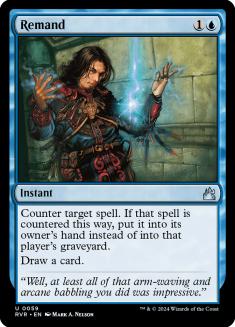

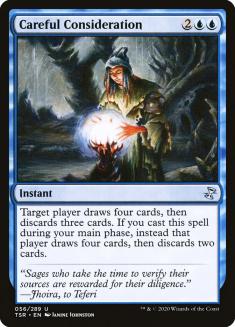
These card choices weren’t arrived at randomly… a lot of thought went into each one.
First of all, there are the card choices that happened because of the influence of Shaun McLaren. Both Supreme Verdict and Spell Snare are cards that he successfully convinced me of as potential one-ofs. I love multiple copies of Spell Snare, and I’ve played many decks that ran three or four of the card, but it was underperforming for me – in large part because Inquisition of Kozilek was often grabbing the cards that Spell Snare would be countering. Shaun’s recent article about Jeskai (as well as some in-person conversations I had with him) convinced me that I shouldn’t feel like a single Spell Snare was a crazy choice. Similarly, a single Supreme Verdict being in the deck gives you the potential to find an out in problematic situations that you otherwise might not be able to escape. Against decks where you really need this effect, you can bring in more, but having one powerful effect like that in your control deck is quite powerful.
The single Negate and Remand come out of a lot of experience with control decks. I’ve long been an advocate for the kind of powerful hard-counter that Negate can represent. While I have Silumgar’s Scorn, I want a card that I can definitively count on as an early counter against a powerful spell. In my experience, that first Negate doesn’t suffer too horribly from diminishing returns, and it has more than earned its spot. The single Remand, on the other hand, has a lot to do with my own general disdain for the card when it isn’t being used to uphold an aggressive stance. If you’re starting a counter war, Remand is much better than if you’re responding to one. Even then, though, it is still a powerful spell, and in a world with so many Snapcaster Mages I definitely like seeing one copy, but much like Shaun McLaren’s statement on Spell Snare, in some decks I just don’t want to ever see the second.
Careful Consideration is by far the weakest card in my deck, and I would consider cutting it if it weren’t for what the card accomplishes here. After a lot of testing games, I was finding that in addition to the worry of mana screw or flood, this deck also had to worry about Dragon screw or flood. Careful Consideration is one small solution to that problem. If I could play Lat-Nam’s Legacy, I’d play Lat-Nam’s Legacy, but I can’t.
Now, you might ask why not play See Beyond. Well, I’ve considered that, and what I really want is an instant. In addition, I really want something that, if I need to, can be a truly powerful play. If you have the mana, a main phase Careful Consideration is really significant. In either a late game, or in a matchup where they can’t punish you for the play, CC is often GG.
Q: Would you play this deck again?
Absolutely!
Depending on what’s in store in Magic Origins, I might even play this deck sooner rather than later.
I’ll see you this weekend in Providence. As much as I love OJ, though, you can expect I won’t be playing it there. Wish me luck!

